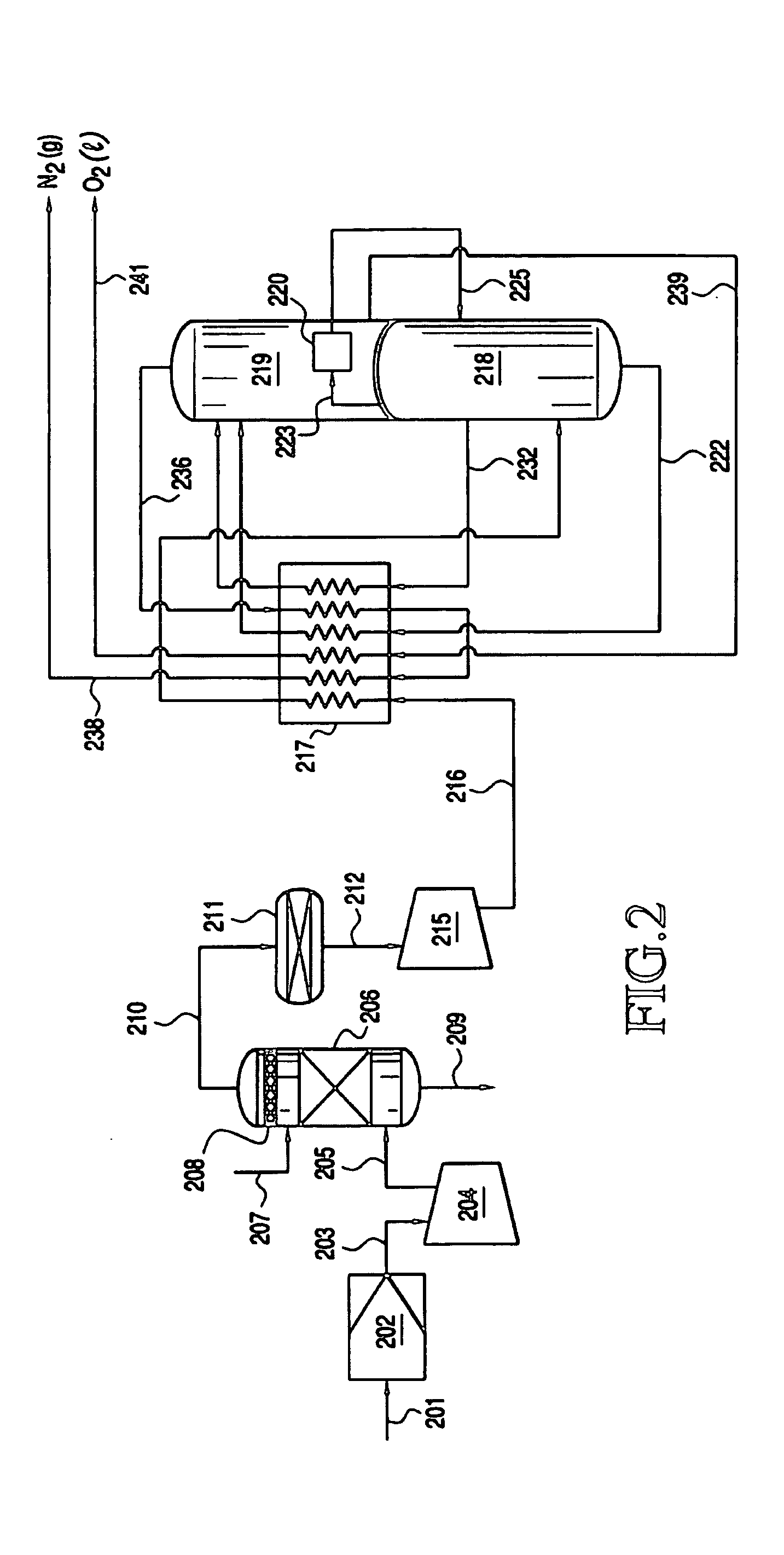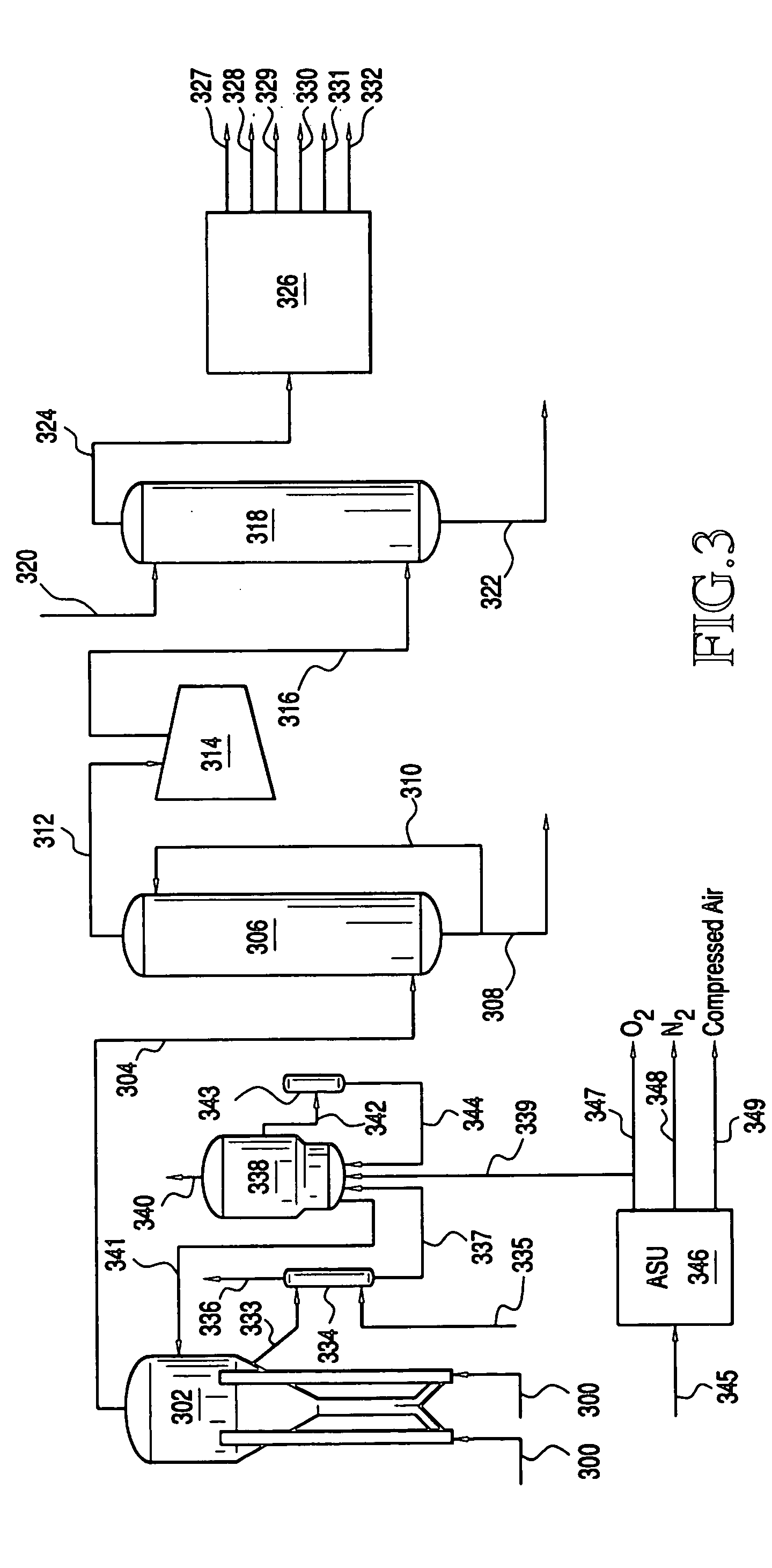Integrating an air separation unit into an oxygenate-to-olefins reaction system
a technology of oxygenate and olefins, which is applied in the direction of liquefaction, combustible gas purification/modification, bulk chemical production, etc., can solve the problems of increasing the cost of producing olefins from petroleum sources, affecting the ability of catalysts to promote the reaction, and the size of catalyst regenerators may be very large, so as to achieve advantageously reduce the amount of undesirable nox compounds formed in the regeneration process
- Summary
- Abstract
- Description
- Claims
- Application Information
AI Technical Summary
Benefits of technology
Problems solved by technology
Method used
Image
Examples
Embodiment Construction
A. Introduction
[0022] The present invention provides for integrating an air separation unit (ASU) into an oxygenate-to-olefins (OTO) reaction system, which may include a polymerization system and / or a methanol synthesis system. The ASU separates air into an oxygen stream and a nitrogen stream, and optionally an argon stream, and also forms a compressed air stream. According to the present invention, the oxygen stream, the nitrogen stream and / or the compressed air stream from the air separation unit may serve as a reactant in syngas generation (e.g., in autothermal reforming, partial oxidation reforming, or catalytic partial oxidation reforming), as a regeneration medium in the OTO reaction system, as a fluidization agent, as a blanketing medium, as a reactant in a sulfur removal unit, as an oxygen source in aerobic waste water treatment, and / or may be used for a variety of other purpose described in more detail herein.
[0023] In a preferred embodiment, the oxygen stream, which is ni...
PUM
| Property | Measurement | Unit |
|---|---|---|
| temperature | aaaaa | aaaaa |
| temperature | aaaaa | aaaaa |
| weight ratio | aaaaa | aaaaa |
Abstract
Description
Claims
Application Information
 Login to View More
Login to View More - R&D
- Intellectual Property
- Life Sciences
- Materials
- Tech Scout
- Unparalleled Data Quality
- Higher Quality Content
- 60% Fewer Hallucinations
Browse by: Latest US Patents, China's latest patents, Technical Efficacy Thesaurus, Application Domain, Technology Topic, Popular Technical Reports.
© 2025 PatSnap. All rights reserved.Legal|Privacy policy|Modern Slavery Act Transparency Statement|Sitemap|About US| Contact US: help@patsnap.com



